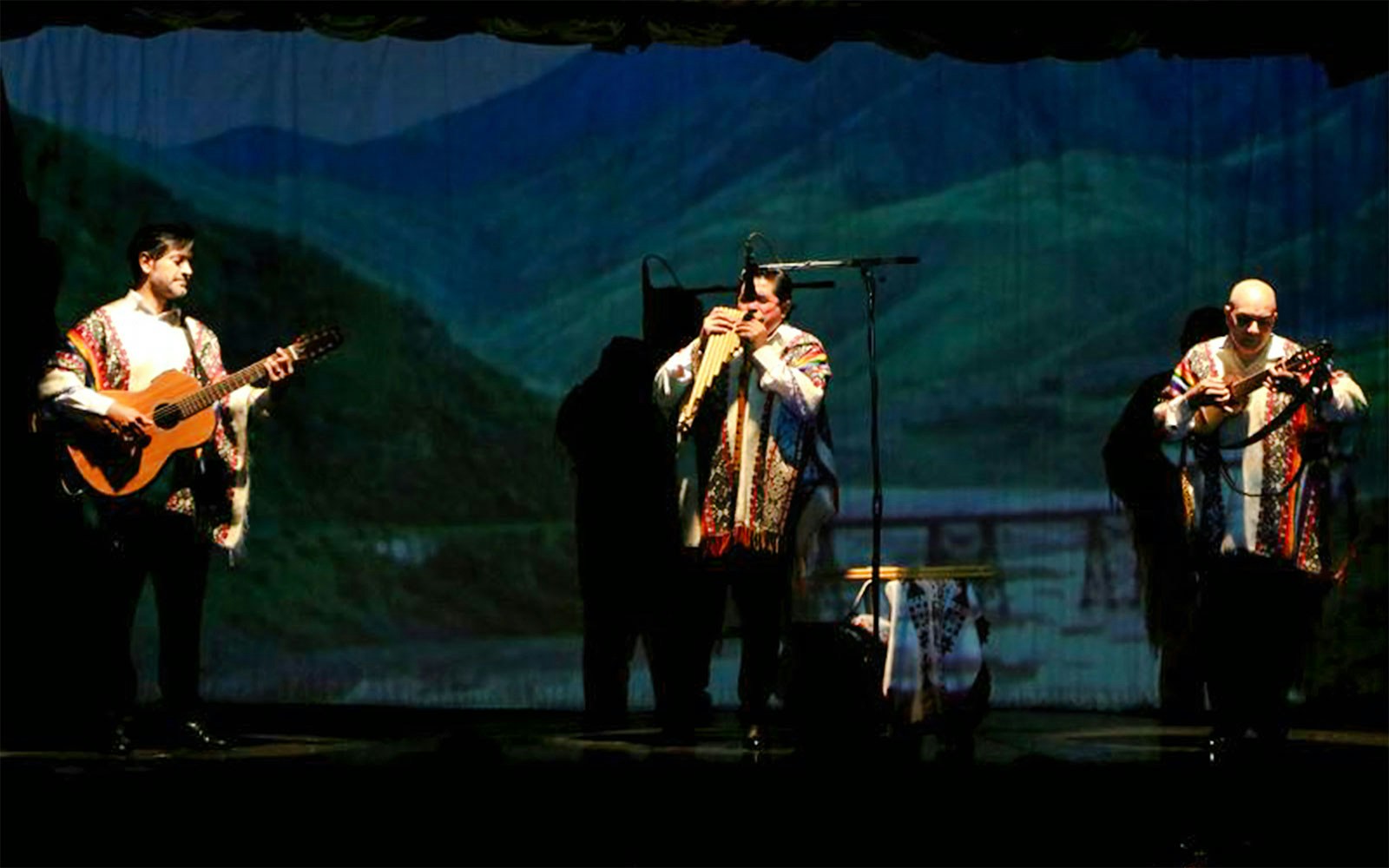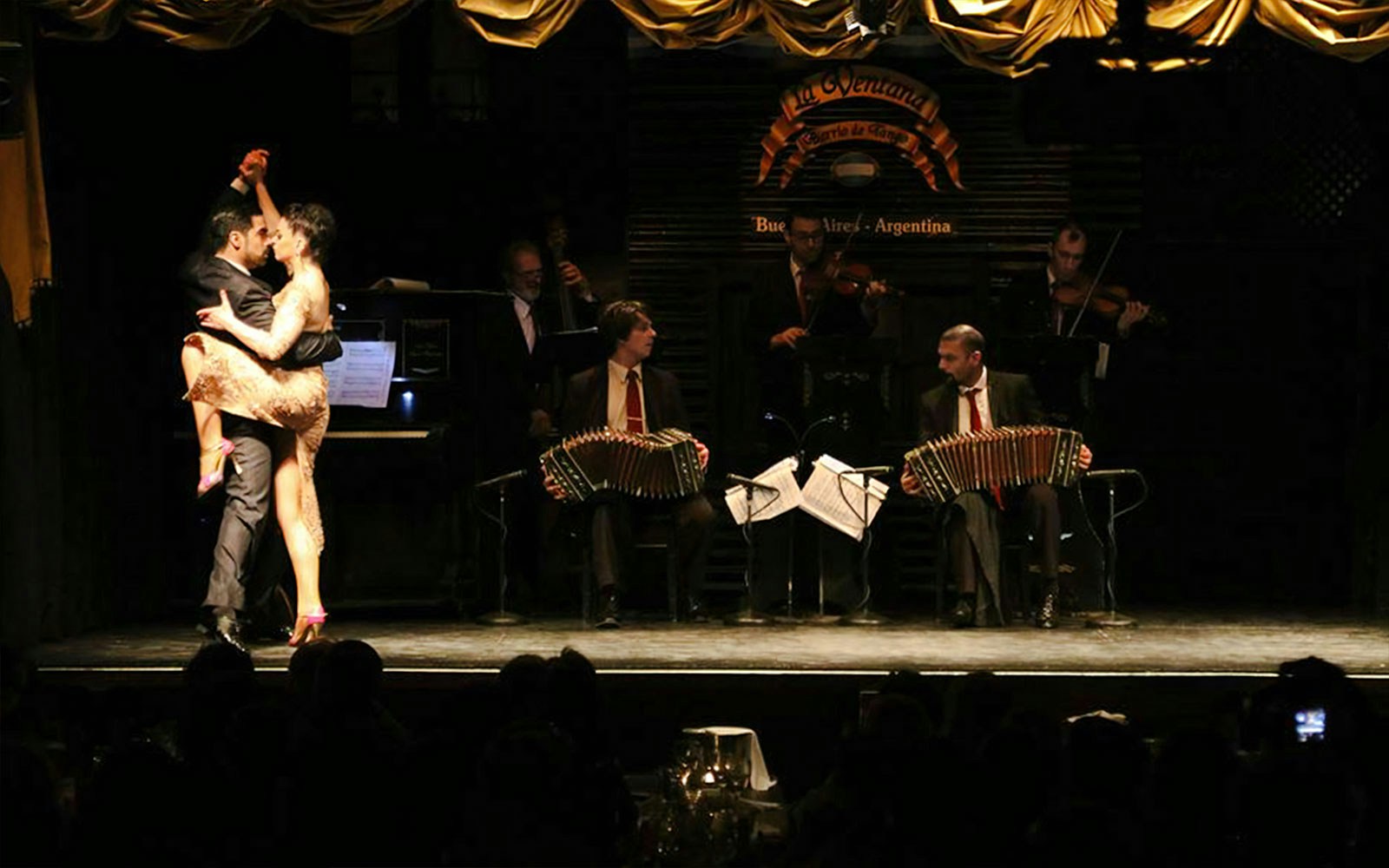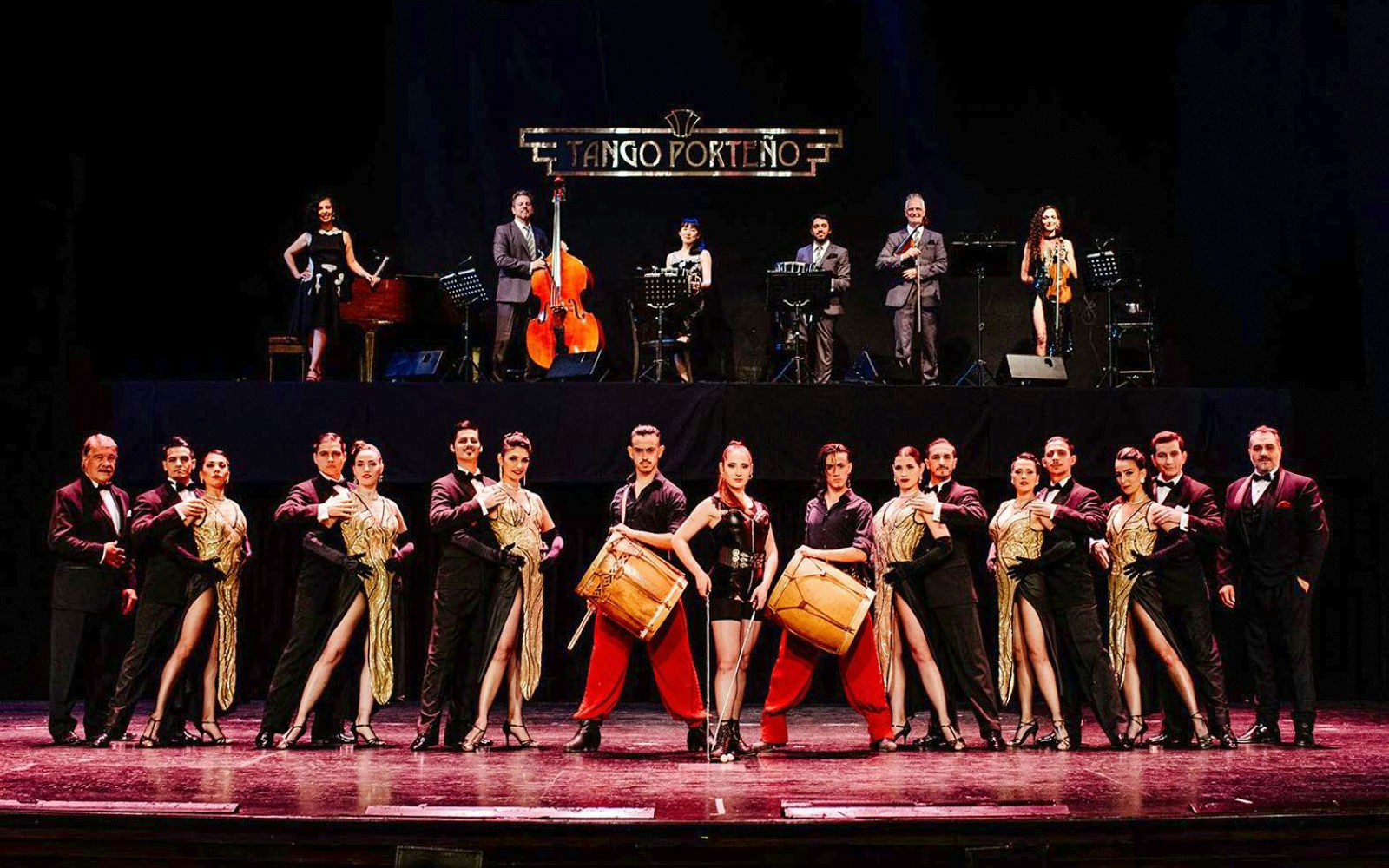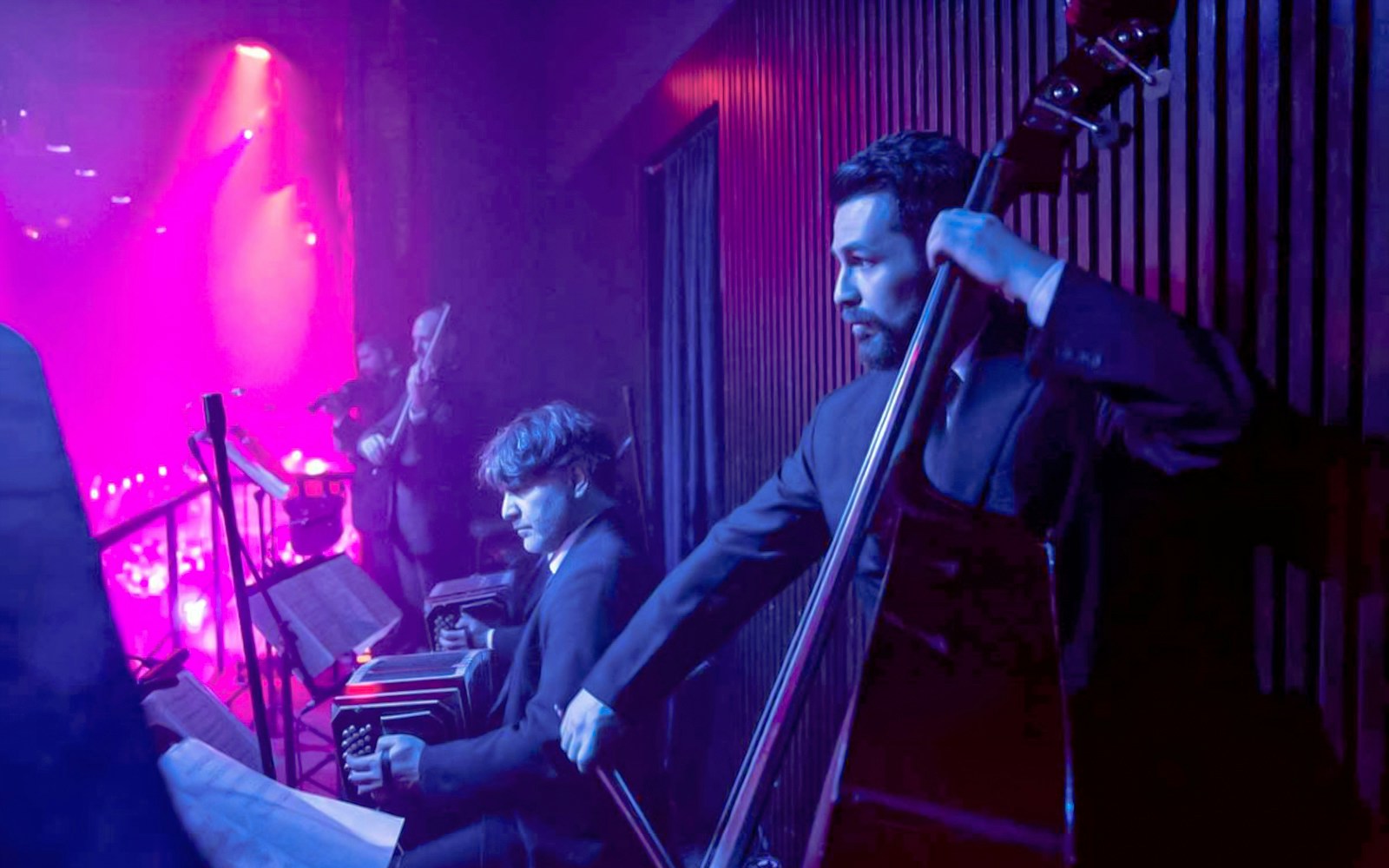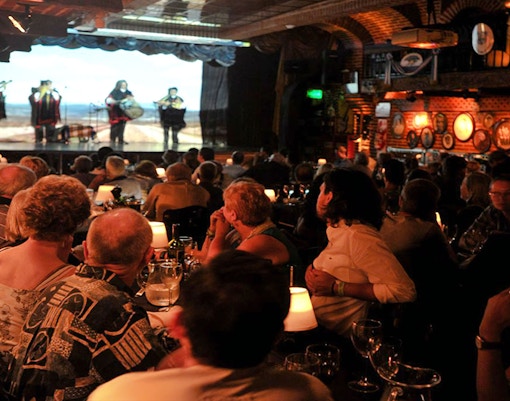In the 1880s, the origin of tango dance began in the working-class neighborhoods of Buenos Aires, where European immigrants, African descendants, and criollo (native-born) populations mingled. The mix of European salon dances, Cuban habanera rhythms, and African candombe beats created a sensual, close-embrace dance unlike anything before.
From milongueros to bandoneóns | Complete history of tango dance, tango music & tango instruments
The origins of tango dance
Late 19th century – The birth in the Barrrios
Famous tango dancers of Buenos Aires
Carlos Gavito
A legend in both performance and teaching, Gavito’s apilado (close embrace) style became iconic. Many even refer to this as “Gavito style dancing.” Beyond technique, his musicality and emotional expression influenced generations.
Ricardo Vidort
Dubbed “The Last Compadrito,” Vidort’s elegance and unmatched timing made him a symbol of the milonguero tradition. His style preserved the essence of tango dance as a conversation between partners and music.
Pedro “Tete” Rusconi
Known for his charisma and unique approach, Tete danced with passion rather than rigid elegance. His love for vals (waltz) music infused his performances with an intoxicating energy.
Roberto “Pocho” Carreras
Defying age and physique expectations, Pocho’s elegance on the dance floor captivated audiences. He remains a respected figure among the famous tango dancers who kept traditional tango alive.
A brief history of tango music
Mid-19th century – Roots
Port cities absorb immigrant salon dances (minuet, polka, mazurka), Afro-Atlantic patterns, and criollo folk. Early pianists like Rosendo Mendizábal shape the idiom; leaders such as Vicente Greco standardize the sextet, key milestones in tango music becoming a codified style and setting up the palette of tango instruments.

Feeling the beat: Tango, milonga & vals
Compás you can walk to:
- Most pieces sit in 2/4 or 4/4 with a steady “marcato en 4” (four clear beats), giving couples a grounded walk.
- Syncopations and held notes create tension, perfect for a dramatic pause (corte).
Three social dance cousins:
- Tango (the classic): Moderate tempo, elastic phrasing, room for stillness.
- Milonga: Quicker, playful, with a “habanera” bounce; fewer pauses.
- Vals (tango-waltz): In 3/4, lilting and circular, ideal for sweeping turns.
Storytelling vocals:
- Singers deliver compact, image-rich verses; refrains (estribillos) land on memorable hooks that guide phrasing for couples.
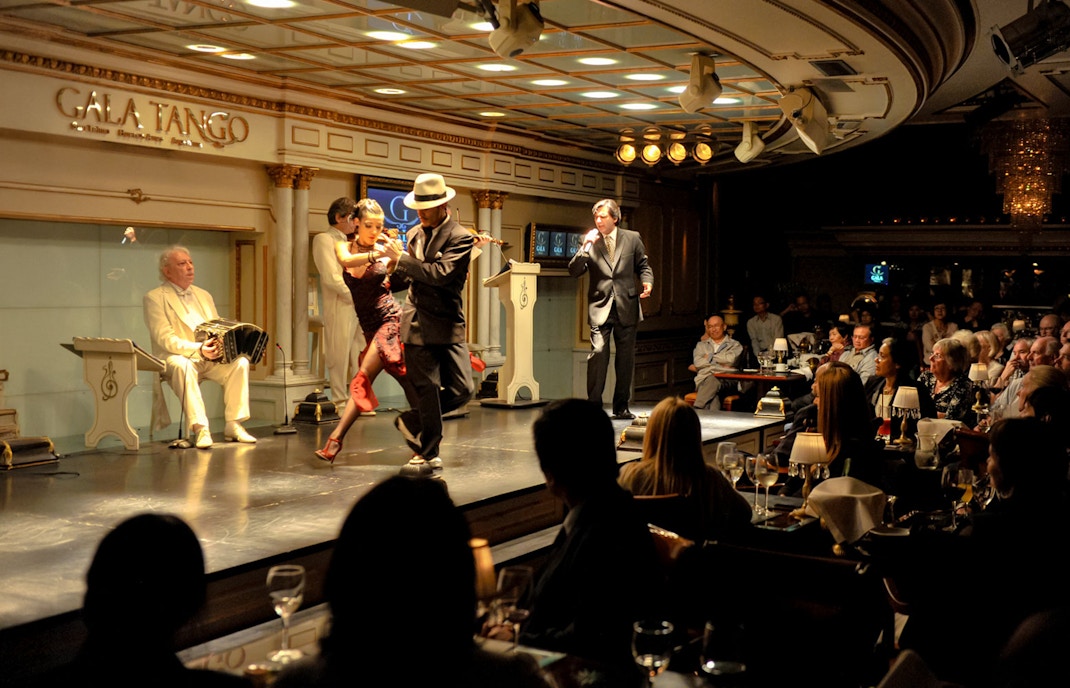
Ensembles you’ll encounter
Tango sextet (piano, double bass, two violins, two bandoneóns) is the classic small-room lineup, tight and percussive, great for social floors. Orquesta típica (large orchestra) adds more bandoneóns/violins, often guitar, plus a singer and occasional percussion, creating the cinematic swell you hear in historical ballrooms.
How parts “speak” to dancers:
- Bandoneóns carry sighing leads, dramatic swells, and snappy accents that cue weight changes.
- Violins sing the melody or tremolo undercurrents that heighten suspense before a pivot.
- Piano drives harmony and rhythmic “marcato,” sometimes tossing dazzling runs that invite playful embellishments.
- Bass lays the heartbeat, clear steps feel inevitable when the bass is present but not overpowering.
- Voice clarifies phrasing; where the singer breathes, dancers often breathe (and pause), too.
Traditional tango instruments

- Double Bass: The anchor. Clear beats outline the walk; occasional slides (glissandi) hint at upcoming cadences; great moments for a poised pause.
- Guitar: In small ensembles, it adds warmth and rhythmic “chop.” Arpeggios can invite slower, more caressing pivots.
- Bandoneón: The signature voice of tango music, with reedy sighs, sharp stabs, and dramatic swells. Bellow shakes can set up breathtaking stillness.
- Violin: Sings the melody or spins tremolos under a held note; both heighten anticipation before a change of direction.
- Flute/Clarinet: Early tango colors; light, airy lines that brighten the texture and encourage playful adornos.
- Piano: The rhythmic/harmonic driver. From strict marcato to sparkling runs, it can flip a couple from grounded caminata to cheeky syncopation.
- Vocals: The narrative thread. Where the singer breathes, dancers often settle and reset, and tiny shared silences that feel like dialogue.
Classic tango and tango nuevo: Starter pack
Whether you’re stepping into a milonga for the first time or diving deep into the history of tango music, these four albums capture the soul of both traditional tango and the bold innovations of tango nuevo.
Piazzolla Tangos 6 (2003)
A vivid collection of Astor Piazzolla’s most emotive works, blending classical elegance with daring rhythmic shifts.
Julio De Caro – RCA Victor 100 Años (2001)
A golden-age treasure showcasing De Caro’s refined arrangements that shaped Argentine tango music in the 1920s and ’30s.
Libertango – Buenos Aires Hora Cero (2010, Astor Piazzolla)
A dramatic, boundary-breaking journey through tango nuevo, led by Piazzolla’s iconic “Libertango.”
La Revancha del Tango (2001, Gotan Project)
A pioneering electrotango album fusing traditional tango instruments with deep electronic grooves for a modern dance-floor twist.
Book your tickets to tango shows in Buenos Aires
Frequently asked questions about the history of tango music, tango dance, and tango instruments
The history of tango dance began in the late 19th century in Buenos Aires’ working-class barrios, where European immigrants, African rhythms, and local folk traditions blended into a sensual partner dance that soon gained international fame.
The history of tango music traces back to the Río de la Plata region, where European salon music fused with African and criollo folk rhythms. Early composers like Rosendo Mendizábal laid the foundation for the genre’s unique sound.
Icons like Carlos Gavito, Ricardo Vidort, Pedro “Tete” Rusconi, and Roberto “Pocho” Carreras are celebrated worldwide for their artistry, musicality, and influence on the tango dance tradition.
Key tango instruments include the bandoneón (the signature sound of tango), violin, piano, double bass, guitar, and sometimes flute or clarinet, along with expressive vocals.
Argentine tango music has a distinctive rhythm (compás), emotional phrasing, and a close connection to dancers’ movements, often in 2/4 or 4/4 time, with syncopations and dramatic pauses.
Tango nuevo is a modern style of tango music pioneered by Astor Piazzolla, blending traditional tango instruments with jazz, classical, and even electronic influences, often for stage performances rather than social dance.
The bandoneón is the soulful core of tango music, producing the melancholic, expressive tones that define the genre’s sound. It leads the melody in most traditional and modern arrangements.
Yes. While many pieces feature vocals, instrumental tango music is common and often preferred in milongas, as it allows dancers to focus on the phrasing and rhythm created by the instruments.
Buenos Aires was the birthplace and cultural hub for both tango dance and tango music, exporting its traditions to Europe and beyond during the early 20th century, which helped cement tango as a world-class art form.





